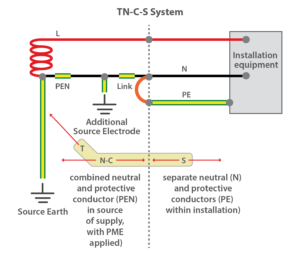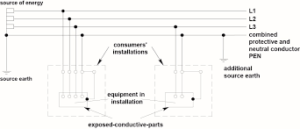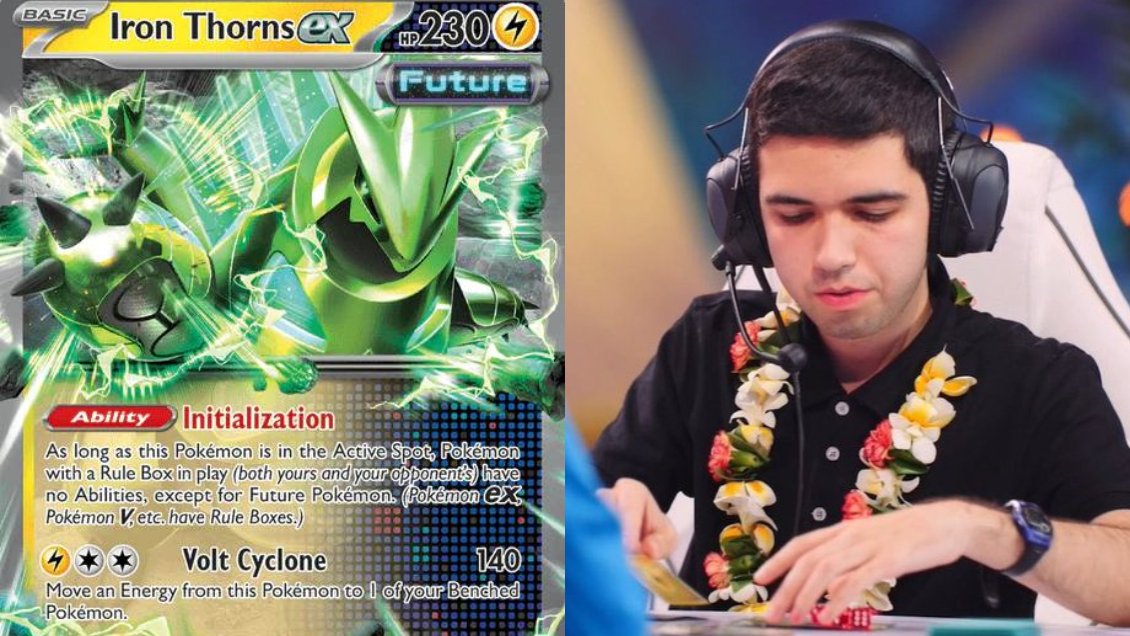Protective Multiple Earthing (PME) is a key part of keeping electrical systems safe. It helps protect people and buildings from electrical faults by grounding the electricity in a safe way. This system is used in many places, including homes, to make sure electricity is safely managed.
In a protective multiple earthing setup, the neutral wire does two important jobs. It acts as both a protective and a neutral conductor. This means it helps carry the electricity back to the ground if there’s a fault. By doing this, PME systems can quickly disconnect power if something goes wrong, making it a reliable choice for electrical safety.
1. What is Protective Multiple Earthing and How Does It Work?
Protective Multiple Earthing (PME) is a method used to keep electrical systems safe. It involves connecting the neutral wire, which carries electricity, to the ground at multiple points. This setup helps to protect people and buildings from electrical hazards. The idea behind PME is to ensure that any stray electricity safely flows into the earth, reducing the risk of electric shock.
In a PME system, the neutral wire serves a dual purpose. It acts both as a protective conductor and a neutral conductor. This means it helps carry electricity back to the power source safely if there’s a fault. By grounding the electricity at different points, PME helps to quickly disconnect power during an issue, preventing potential dangers.
PME is commonly used in homes and other buildings to ensure electrical safety. It’s especially important in areas where electricity needs to be safely managed, like in kitchens or bathrooms. Understanding how PME works can help you appreciate the safety it provides in your daily life.
2. Why Protective Multiple Earthing Is Essential for Electrical Safety
Electrical safety is a top priority in any building, and Protective Multiple Earthing plays a key role in this. PME helps to ensure that electricity is safely grounded, reducing the risk of electrical shocks or fires. This is especially important in places where people are constantly exposed to electrical systems, such as homes and offices.
The main benefit of PME is that it provides a reliable way to manage electrical faults. When a fault occurs, PME systems quickly disconnect the power, preventing any harm. This makes it an essential part of any electrical installation. Without PME, there would be a greater risk of electrical accidents, which could be dangerous or even deadly.
In addition to keeping people safe, PME also helps protect property. By safely grounding electricity, it prevents damage to electrical appliances and wiring. This means fewer repair costs and less downtime due to electrical issues. Overall, PME is a vital component of modern electrical systems, ensuring safety and reliability.
3. How Protective Multiple Earthing Keeps Your Home Safe
Your home should be a safe place, and Protective Multiple Earthing helps make sure it is. PME systems are designed to protect you and your family from electrical hazards. By grounding electricity at multiple points, PME reduces the risk of electric shock and other dangers in your home.
One of the ways PME keeps your home safe is by providing a clear path for electricity to follow if something goes wrong. If there’s a fault, the PME system quickly directs the electricity into the ground, away from people and property. This fast response helps to prevent accidents and keeps your home secure.
Another important feature of PME is that it works in all parts of your home. Whether you’re in the kitchen, bathroom, or living room, PME is there to protect you. It’s especially useful in areas with a lot of electrical appliances, where the risk of faults is higher. With PME, you can feel confident that your home is equipped to handle any electrical issue safely.
4. Understanding the Basics of Protective Multiple Earthing
To understand Protective Multiple Earthing, it’s important to know the basics. PME is a system that connects the neutral wire of your electrical supply to the ground at various points. This grounding helps manage any stray electricity that could otherwise cause harm.
The key idea behind PME is safety. By grounding the neutral wire, PME ensures that any unexpected electrical flow is safely directed into the earth. This prevents dangerous situations like electric shocks or fires. It’s a simple but effective way to keep your electrical system under control.
PME is a standard practice in many buildings, including homes and businesses. It’s used because it’s reliable and efficient at managing electrical faults. Understanding the basics of PME can help you appreciate why it’s such an important part of modern electrical systems.
5. Common Uses of Protective Multiple Earthing in Everyday Life
Protective Multiple Earthing is used in many places you might not even think about. From your home to public buildings, PME systems are everywhere, working quietly to keep you safe. One common use is in residential areas, where PME ensures that homes are protected from electrical faults.
In everyday life, PME is essential in places like schools, offices, and shopping centers. These are all places where people use a lot of electricity, and PME helps manage the risk. By grounding the electricity at different points, PME makes sure that any faults are dealt with quickly and safely.
Another important use of PME is in places where electrical safety is critical, like hospitals. In these settings, any electrical problem needs to be addressed immediately to protect patients and staff. PME systems are designed to respond quickly, ensuring that electricity is managed safely and effectively.
6. The Role of Neutral Conductors in Protective Multiple Earthing
In a Protective Multiple Earthing system, the neutral conductor has a special role. It’s not just a wire that carries electricity back to the power source; it also acts as a protective conductor. This means it helps to safely ground any stray electricity that might pose a danger.
The neutral conductor in a PME system is connected to the ground at multiple points. This grounding helps manage any unexpected electrical flow, directing it safely into the earth. By doing so, the neutral conductor plays a key role in preventing electrical hazards like shocks or fires.
The dual role of the neutral conductor makes PME systems more efficient at handling electrical faults. It ensures that any fault is quickly dealt with, reducing the risk of accidents. Understanding the role of the neutral conductor can help you see why PME is such an important part of electrical safety.
7. Why PME Systems Are Important in Electrical Installations
When installing electrical systems, safety is the main concern, and Protective Multiple Earthing is a big part of that. PME systems are important because they provide a reliable way to manage electrical faults. By grounding electricity at multiple points, PME helps prevent accidents.
One of the reasons PME is important in electrical installations is because it works quickly. If a fault occurs, the PME system immediately directs the electricity into the ground, reducing the risk of harm. This quick response is essential in keeping people and property safe from electrical hazards.
Another reason PME is important is that it’s versatile. It can be used in a variety of settings, from homes to large buildings, ensuring safety across different types of electrical installations. With PME, you can be sure that your electrical system is equipped to handle any issues that might arise.
8. Protective Multiple Earthing: A Simple Guide for Beginners
If you’re new to Protective Multiple Earthing, it might seem complicated, but it’s actually quite simple. PME is a system that connects the neutral wire of your electrical supply to the ground at multiple points. This grounding helps protect you from electrical dangers like shocks or fires.
The main idea behind PME is to make sure that any stray electricity is safely directed into the earth. This is done by using the neutral wire as both a protective and a neutral conductor. By grounding the electricity at different points, PME ensures that any faults are quickly dealt with.
For beginners, it’s important to know that PME is used in many different places, from homes to public buildings. It’s a reliable and effective way to keep electrical systems safe. By understanding the basics of PME, you can feel more confident about how your electrical system works.
9. How Protective Multiple Earthing Prevents Electrical Faults
Electrical faults can be dangerous, but Protective Multiple Earthing helps prevent them. PME is a system that grounds the neutral wire of your electrical supply, making sure that any stray electricity is safely directed into the earth. This reduces the risk of electric shocks and other hazards.
One of the ways PME prevents electrical faults is by providing a clear path for electricity to follow if something goes wrong. If a fault occurs, the PME system quickly disconnects the power, preventing any harm. This fast response is crucial in keeping people and property safe from electrical dangers.
PME also helps prevent faults by grounding the electricity at multiple points. This makes the system more efficient at handling unexpected electrical flow. With PME, you can be sure that your electrical system is equipped to prevent and manage faults safely.
10. The Benefits of Using Protective Multiple Earthing in Your Home
There are many benefits to using Protective Multiple Earthing in your home. PME helps to keep your electrical system safe by grounding electricity at multiple points. This reduces the risk of electric shocks and other dangers, making your home a safer place to live.
One of the main benefits of PME is that it provides a reliable way to manage electrical faults. If a fault occurs, the PME system quickly disconnects the power, preventing any harm. This quick response is essential in keeping your family and property safe from electrical hazards.
Another benefit of PME is that it protects your electrical appliances and wiring. By grounding electricity safely, PME helps prevent damage to your home’s electrical system. This means fewer repair costs and less downtime due to electrical issues. Overall, PME is a smart choice for any home.
11. What You Need to Know About Protective Multiple Earthing Systems
If you’re interested in electrical safety, it’s important to know about Protective Multiple Earthing systems. PME is a method used to keep electrical systems safe by grounding the neutral wire at multiple points. This helps protect people and property from electrical hazards.
One key thing to know about PME is that it uses the neutral wire as both a protective and a neutral conductor. This means it helps safely manage any stray electricity that might otherwise cause harm. By grounding the electricity at different points, PME ensures that any faults are quickly dealt with.
Another important thing to know is that PME is used in a variety of settings, from homes to large buildings. It’s a versatile and reliable way to keep electrical systems safe. By understanding the basics of PME, you can appreciate the safety it provides in your daily life.
12. Protective Multiple Earthing and Its Importance in Modern Buildings
In modern buildings, electrical safety is a top priority, and Protective Multiple Earthing plays a key role in this. PME systems are used to keep electrical.
13. Protective Multiple Earthing in Hazardous Locations: What You Need to Know
Protective Multiple Earthing is crucial in keeping electrical systems safe, but it’s not always suitable for hazardous locations. In places like petrol stations, where there is a risk of ignition or explosion, PME is generally not allowed. This is because stray electrical currents could cause serious accidents in these environments.
In hazardous locations, the risk of diverted currents returning through the earth can be dangerous. That’s why alternative earthing systems, like TT systems, are often used instead of PME. These systems are designed to handle the unique challenges of hazardous environments, ensuring safety where PME might not be the best choice.
It’s important to know that while PME is effective in many settings, it’s not a one-size-fits-all solution. Understanding when and where PME should be used can help ensure that your electrical systems are both safe and effective, no matter the environment.
14. How to Assess the Suitability of Protective Multiple Earthing for Your Building
Before using Protective Multiple Earthing in a building, it’s important to assess its suitability. Not all buildings are the same, and some may require special considerations. For example, buildings with high levels of metalwork, like factories or workshops, might need a different approach to earthing.
The first step in assessing suitability is to understand the building’s electrical load and layout. PME works well in many residential and commercial buildings, but in some cases, the specific conditions might call for a different system. A professional assessment can help determine the best earthing method for your building.
Once you’ve assessed the building’s needs, you can decide whether PME is the right choice. If not, alternatives like TT or IT earthing systems might be better suited. Making the right choice is essential for ensuring long-term safety and reliability in your building’s electrical system.
15. The Importance of Regular Maintenance for Protective Multiple Earthing Systems
Like any part of an electrical system, Protective Multiple Earthing requires regular maintenance. Over time, connections can weaken or corrode, which can reduce the effectiveness of the PME system. Regular checks help ensure that everything is working as it should, keeping your system safe and reliable.
One important aspect of maintenance is checking the grounding connections. Since PME relies on these connections to safely direct electricity into the earth, any issues here can compromise the whole system. Regular inspections can catch potential problems early, before they lead to more serious issues.
In addition to inspections, it’s also important to test the PME system regularly. Testing can help identify any weaknesses or faults in the system, ensuring that it remains effective. By keeping up with regular maintenance, you can ensure that your PME system continues to protect your home or building from electrical hazards.
16. The Role of PME in Preventing Electrical Fires
One of the key benefits of Protective Multiple Earthing is its ability to prevent electrical fires. By safely grounding stray electricity, PME reduces the risk of sparks that could ignite a fire. This is especially important in buildings with complex electrical systems, where the risk of faults is higher.
Electrical fires can start when a fault in the system causes a surge of electricity. PME helps prevent this by providing a low-resistance path for the electricity to follow. This means that, instead of sparking a fire, the electricity is safely directed into the earth, reducing the risk of damage and injury.
Preventing electrical fires is one of the most important functions of PME systems. By understanding how PME works and ensuring that your system is properly maintained, you can help protect your home or building from this dangerous risk.
17. Protective Multiple Earthing vs. Other Earthing Methods: What’s the Difference?
When it comes to electrical safety, there are several different earthing methods to choose from, and Protective Multiple Earthing is just one option. Other methods include TT and IT earthing systems, each with its own advantages and uses. Understanding the differences can help you choose the right system for your needs.
Protective Multiple Earthing is often used because it provides a reliable way to manage electrical faults. However, in some situations, TT systems, which use a separate earth electrode for each installation, might be more suitable. IT systems, which are isolated from earth, are used in environments where continuity of service is crucial, like hospitals.
Choosing the right earthing method depends on the specific needs of the building and its electrical system. By comparing the different methods, you can find the one that best fits your requirements, ensuring safety and reliability.
18. The Future of Protective Multiple Earthing in Modern Electrical Systems
As technology advances, the role of Protective Multiple Earthing in modern electrical systems continues to evolve. New materials and techniques are making PME systems more efficient and reliable than ever before. These advancements are helping to keep buildings safe in a world where electrical demands are constantly increasing.
One area of development is in the materials used for grounding connections. New alloys and coatings are being developed to resist corrosion and improve conductivity, making PME systems even more effective. These advancements help ensure that PME remains a reliable choice for electrical safety.
Looking to the future, PME is likely to continue playing a key role in electrical systems around the world. As our reliance on electricity grows, so too does the importance of keeping it safely grounded. With ongoing innovations, PME systems will continue to protect people and property in the years to come.
Conclusion
Protective Multiple Earthing is a simple yet powerful way to keep our homes and buildings safe from electrical dangers. By grounding electricity at different points, PME helps prevent accidents like electric shocks and fires. It works quietly in the background, making sure that any electrical problems are handled safely and quickly. Understanding how PME works can help us appreciate the safety it provides every day.
In today’s world, where we rely so much on electricity, having a reliable safety system like PME is really important. Whether it’s in our homes, schools, or workplaces, PME helps protect the people and things we care about. By keeping our electrical systems safe, we can enjoy the benefits of modern life without worrying about the risks.








